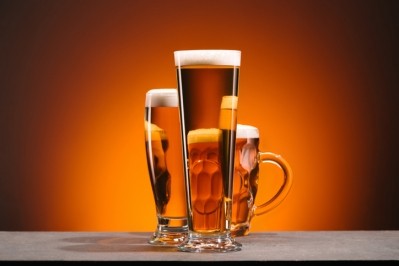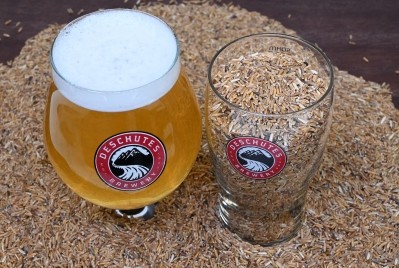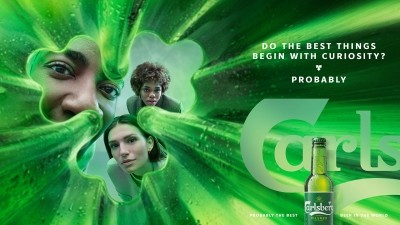Will AI revolutionize how brewers create new beers?

Can AI help create better beers; will it save brewers time and money; and where does this leave the role of the traditional human brewer? We take a look at how AI is being used in the lab, in small breweries, and on a mass commercial scale.
Hand brewed by robots: An American AI-PA
Taking AI into the brewery is the UK's St Austell Brewery. The brewery was founded in Cornwall in 1851: but is looking to the future and debuted a beer developed with the help of AI last month.
'Hand Brewed by Robots' is a 4.2% 'American AI-PA' that was created by an online generator, with assistant brewing manager Barnaby Skerrett feeding it instructions based on the ingredients he wanted to use and the flavors required.
While the recipe was computerized, the beer is still crafted by hand using St Austell Brewery’s small batch kit.
For the brewery, the goal of using AI has simply been about experimentation, rather than setting out to save time or money.
“The idea for the beer came from me working with AI tools in my general job with brewhouse automation," said Skerrett. "As I was talking to the AI one day, I thought I’d ask it a question about brewing to catch it out as I was interested to see the results.
“I told it to write me a recipe on some broad parameters of colors and flavors and it sent me some ideas, so I decided to turn them into a recipe. There were a couple of tweaks to make it cask-appropriate, as it didn’t seem to know what cask was, which was quite interesting.”
The beer uses Willamette, Cascade and Sulatana hops to give a 'tropical juicy and resinous flavor' to the AI-PA.
Skerrett also doesn’t think there’s any threat to brewing from AI in the future.
“On the beer side, too much requires human input whether that’s checking the ingredients and other quality checks that can’t be done by AI,” he said.
“It’s the same when the beer comes out the other side and we do tasting checks. An AI can never properly tell you whether that beer tastes fantastic or if it’s not up to scratch.”
What does your beer taste like?
That's a problem that Belgian researchers have been looking into. In beer making, one of the biggest challenges for brewers is to be able to describe - and then replicate - the aromas and flavors in a brew. As with any food product, comparing and ranking flavor profiles of beers is highly subjective: with guides often resorting to generic terms such as ‘fruity’.
Scientist from VIB-KU Leuven Center for Microbiology and the Leuven Institute for Beer Research in Belgium have been using AI to create a clearer and more accurate way of describing beers. That information can then be used to analyse the flavor profile of beers, predict how beer will be rated by consumers, and what aroma compounds can be added to improve it.
They started by chemically analyzing beers, carefully measuring the concentrations of hundreds of aroma compounds. That was accompanied by an evaluation by a trained panel of 15 people, who were asked to comment on a set of 50 criteria.
The project was a ‘truly Herculean effort’, according to the researchers, who quickly realized that the initial 100 beers was not enough to capture the beer diversity in Belgium alone (they ultimately analyzed 250 beers over the five year project).
Once they had the chemical concentrations and detailed tasting reports for hundreds of different beers, scientists then turned to AI to connect the two. One model could predict key aromas and the final appreciation score of a beer, without the need for human tasting.
These outcomes, in turn, were used to further improve the taste of an existing commercial Belgian ale, by adding certain aromas predicted by the model to boost the beer’s quality.
The modified beer scored better in blind tastings than the original version.
“The flavor of beer is a complex mix of aroma compounds. It is impossible to predict how good a beer is by just measuring one or a few compounds. We really need the power of computers,” explained Michiel Schreurs, one of the researchers on the project.
As consumers look to moderate their alcohol consumption, alcohol-free beers are booming. While brewers champion the success they’ve made in creating far better tasting alcohol-free brews than their predecessors a decade ago, they still have to keep up with the flavor, mouthfeel and quality of alcoholic counterparts.
That’s where AI could come in, said Kevin Verstrepen of Belgium’s VIB-KU Leuven team.
“Our biggest goal now is to make better alcohol-free beer. Using our model, we have already succeeded in creating a cocktail of natural aroma compounds that mimic the taste and smell of alcohol without the risk of a hangover.”
Furthermore, he sees study the potential of the tech to expand to food products.
An artificial brewer?
In principle, AI could be used to train an 'artificial brewer', says Kevin Verstrepen of Belgium’s VIB-KU Leuven - but that's not something that's likely to happen soon.
Rather - at least for the time being - the role of AI is as a tool for brewers to help them tweak existing beers.
"So far, the models make a link between the chemical composition and consumer perception and appreciation. In our study, we tested the models by spiking commercial existing beers with complex mixtures of aroma compounds predicted by the AI model to make the beer even better. And it works!
"However, since spiking beer with additives is not common practice, it is still up to brewers to reach the desired chemical changes through the brewing process - such as by tweaking the ingredients, brewing scheme or fermentation conditions.
"The good news is that this is possible – because we know so much about the aroma compounds in beer and their origins, knowledgeable brewers know perfectly how they can modify the concentrations of major volatiles, such as for example fusel alcohols, esters, diacetyl, aldehydes, DMS, alcohol, and even very specific hop and malt aromas."
Where does AI get it wrong?
Getting it wrong is part of the learning process for human beings - and that's the same for AI.
In 2018, London-based IntelligentX brewed a beer with AI: and noted that human brewers sometimes rejected AI's brews - all part of the machine learning process.
The VIB-KU Leuven team didn't encounter this specific problem, but it did find other limitations to AI.
"One specific shortcoming of the models that we made was that they are not good at estimating upper boundaries for aroma compounds, they will often predict that increasing a positive compound always results in a positive change," said Verstrepen.
"This is of course false; there definitely can be too much of a good thing!
"The reason why this happens is because we trained our models on existing, commercial beers and these hardly have real off-flavors where there really is too much of a compound. Hence, the models cannot learn very well what it means to have too much."
This is again where human brewers can guide the tech."For us, the problem is easy to circumvent – we know what we are doing and what the normal boundaries for every aroma compound are, and we stay in that natural range."
In the future, giving the models a wider variety of beers - including lower quality ones - could help it learn.
Cutting NPD time
Sapporo Breweries - one of the biggest brewers in Japan - has already turning to AI for its brews and sees the potential to expand this in the future.
Unlike St Austell, it is focused on how AI can be used to reduce NPD time and costs on a mass scale.
Partnering with IBM, last year it released its first alcoholic beverage developed with AI.
While an RTD alcohol rather than a beer, “Otoko Ume Sour Salty Plum” used AI to create the right flavor profile for the product.
Sapporo found that AI - called the N-Wing Star (New Wing Star) - could 'significantly reduce' the time needed for NPD.
It estimates that it can cut NPD time by approximately 50%: thanks to the precision of AI in sorting through potential prototypes in early stages.
And Sapporo highlights the potential of the tech to go beyond what brewers do: saying it's brought the opportunity for the AI to propose recipes and ingredient combinations that humans would not have thought of.
It is already looking to extend the tech across its RTD brands.














